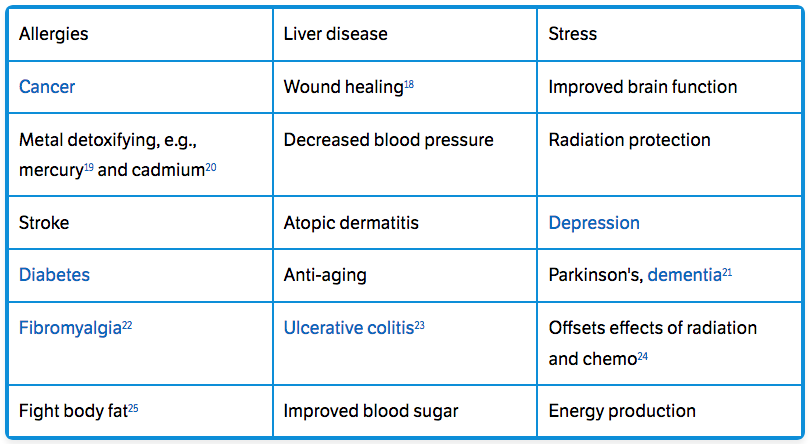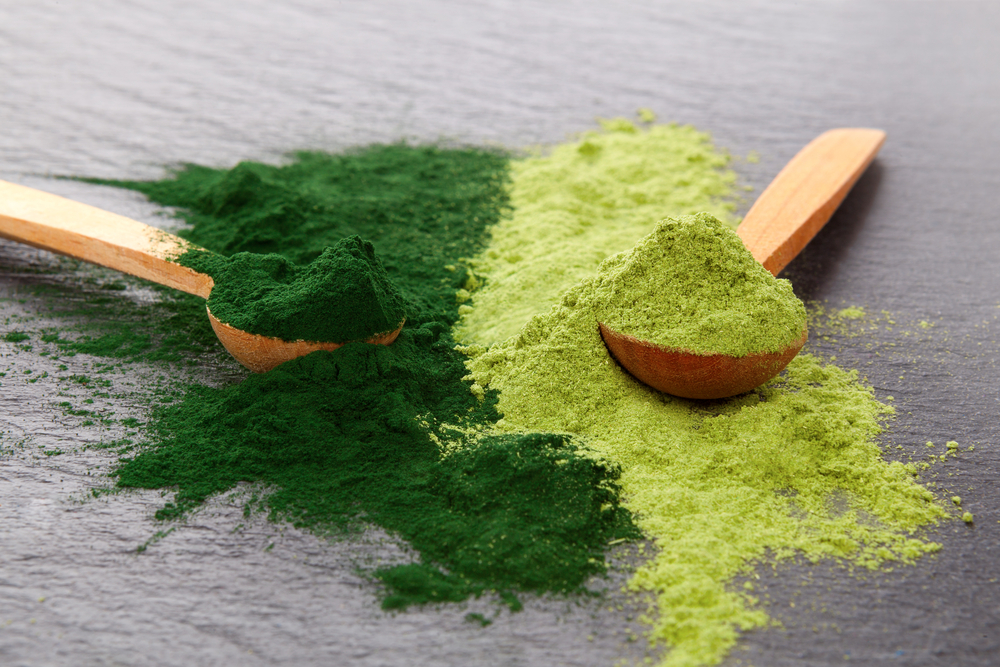Chlorella’s Effect on Disorders and Diseases
For anyone who suffers from frequent bouts of upper respiratory tract issues, and even for anyone wanting to protect against them, research shows three interesting things: First, about 95 percent of all infections start in what’s called the mucosal surfaces, or moist areas such as your nose, eyes and mouth.1
Second, a School of Sport, Health and Exercise Sciences study2 at Bangor University in the U.K. revealed that women who don’t tend to get much exercise but then start walking briskly for 45 minutes a day may, after just a few months, cut the frequency of such infections in half. Third, mucosal surfaces can be protected by “immunological barrier” antibodies contained in chlorella, a freshwater alga.
In fact, this relatively unknown alga has so many beneficial functions in your body, it’s hard to list them all. But first, we’ll tackle the impact of the studies.
Dr. Michael Greger, a New York Times best sellers author at Nutrition Facts, explains that even a 30-minute workout three times a week might be enough to provide a significant immune system boost and considerably curtail your risk of developing upper respiratory problems.3 But regarding its relation to your susceptibility to flu-like symptoms (and arguably, the flu itself), those mucosal surfaces:
” … [A]re protected by antibodies like IgA, which provide ‘an immunological barrier by neutralizing and preventing viral pathogens from penetrating the body through the mucosal surfaces.’ The IgA in our saliva, for example, is ‘the first line of defense against respiratory tract infections such as pneumonia and influenza.'”4
He also states that it doesn’t take much, including in children: “Let kids run around for just six minutes, and you can boost the numbers of immune cells circulating in their bloodstream by more than a third.”5
How Studies Have Used Chlorella to Increase Athletes’ Immune Systems
While it may seem counterintuitive, it was established years ago that heavy exercise for a prolonged period may actually reduce your resistance to infections, even leading to a two to six times greater risk of acquiring an upper respiratory tract infection following strenuous activity such as marathon participation.6 As such, immune function is something savvy sports coaches keep their eye on and even monitor, as illnesses like these can seriously undermine athletic performance.
One of the most effective ways to inhibit illness is to minimize contact with cold viruses, but it’s not always enough for athletes who push their bodies to extremes (or otherwise overtrain) to wash their hands or wear a mask.
Upper respiratory tract infections can be initiated when latent viruses already inside your body (such as Epstein-Barr [EBV]) are reactivated. According to Greger, this can happen as soon as your immune system starts to flag. In fact, IgA levels drop the day before EBV “comes out of hiding” and symptoms begin emerging, which can be linked to reduced salivary IgA during training.
Greger suggests that to keep athletes’ collective immune functions strong, using nutritional yeast — a one-celled fungi — can help improve immunity in athletes,7 but, as Greger asks, what about a one-celled plant? Chlorella, described as a single-celled, freshwater alga (compared to spirulina, which is multicelled) is generally sold in powder or tablet form.
Scientists in Japan reported that levels of IgA in breast milk are increased when nursing mothers include a chlorella regimen as part of their supplementation.8 In another trial, 30 chlorella tablets a day for a month increased IgA secretion in study participants’ mouths,9 which researchers took to mean it “possibly improves mucosal immune function in humans.”
In a Canadian study, a “chlorella-derived dietary supplement” didn’t seem to have any effect at all in increasing antibody response to the flu shot,10 but they used an extract of chlorella rather than the real thing, Greger emphasizes. Finally, he notes a study involving kendo training in Japan:
“High-intensity physical activity and group living create an environment ripe for infection, and, indeed, the training was so intense IgA levels significantly dropped — but not in those given chlorella each day. So, chlorella intake may attenuate the reduced IgA secretion during athletic training.”11
Benefits Regarding Chlorella Use
Dr. Marc Bubbs, director of nutrition for the Canadian Men’s National Basketball Team, cautions that if intense training sessions are part of your routine you may be doing yourself more harm than good in regard to increasing your disease immunity. However, in explaining the outcome of a Brazilian study,12 he notes:
“Contrary to popular belief, it’s not simply a high total training load that depletes immunity, but rather how abruptly your training ramps up that leaves your immune system compromised and susceptible to attack. In fact, experts have uncovered dramatic increases in training volume are perhaps a better predictor of upper-respiratory tract infection (URTI) than just your training load alone.”
Bubbs’ premise answers questions many have about what you can do to support your body’s many functions through diet and supplementation, and what you can do to elicit extra immune support to fight off disease and infections, especially before a major athletic competition. For most people, though, knowing what to add and what to avoid can be tricky. Chlorella, he explains, is rich in chlorophyll, plus:
“It’s tremendously nutrient-dense, but cannot be broken down by the human digestive tract due to its hard cell wall, and thus can only be consumed via supplementation. Chlorella is a complete protein source containing all essential amino acids, a significant source of iron and vitamin C, as well as [provides] 100mg of omega-3 fats per teaspoon.”13
He adds that, as mentioned, it’s also “tremendous” as an antioxidant, with a number of powerful free radical scavengers, including vitamin C, beta-carotene, lycopene and lutein. Bubbs cited a study published in the European Journal of Nutrition that compared 26 cyclists, half given chlorella and the others a placebo at the beginning, at four weeks in and again at weeks five and six.14
The training was intense and called for enormous endurance, but concluded with more protection from infection in the first group, signaling chlorella may be a “simple and effective strategy to support immunity for athletes pushing themselves hard in preparation for competition.”15
Chlorella’s Effect on Disorders and Diseases
Aside from athletes, due to its rich assortment of inflammation-fighting essential nutrients, chlorella, according to IdeaHacks16 and SelfHacked,17 has been identified as having properties that may be beneficial for increasing stamina and endurance and aiding in a plethora of diseases and disorders, including:

Caveats Regarding Chlorella Use
As the subtitle suggests, there are a few things to watch for in regard to using chlorella as a dietary supplement. In short, one brand of chlorella, when taken by a patient with hepatitis C, seemed to be a contributing factor in development of psychosis. Researchers described it as chlorella-induced psychosis, which she developed after taking the alga for two months. It happened twice, and the symptoms seemed to diminish when she stopped taking it.26
However, there’s been a lot of speculation about whether her condition was linked to an adverse reaction to chlorella, whether the incidents were coincidental or whether there was some “toxic impurity or adulteration” in the supplements.27
Most of the research surrounding chlorella points to its benefits. A previously cited study notes that chlorella supplementation may decrease anemia and pregnancy-related hypertension28 and another lists several potent antioxidant carotenoids it contains, such as beta-carotene, lutein and zeaxanthin.
Breastfeeding mothers taking chlorella were found to have higher concentrations of these antioxidants.29 Further, other research indicates that chlorella supplementation by pregnant moms may actually prevent the transfer of mercury to both the fetus and the mother herself.30 In general, chlorella is considered safe, but it may contain trace levels of iodine so it’s been suggested that certain individuals should pass it up, including:
- People with sensitive thyroid conditions
- People who are sensitive to certain molds
- Those with blood-clotting disorders
- People who are taking a blood thinner such as warfarin (Coumadin), as it may alter the drug’s effectiveness31
- Men and postmenopausal women due to the high iron content
However, anyone with concerns should talk to a qualified health practitioner to determine if chlorella supplementation would be beneficial for them.
Recommended Chlorella Intake
One of the most nutrient-dense algae in the world, 3 tablespoons or 1 ounce of chlorella per day contains 16 grams of protein, plus high percentages in regard to your RDI, or reference daily intake:

In addition, if you decide to start taking chlorella supplements, whether in capsule form, tablet or a powder, start gradually, and make sure you don’t choose alga supplements that are freeze-dried, pasteurized or contain synthetic ingredients, as they won’t contain beneficial enzymes. They should be as absorbable and digestible as possible. Because chlorella has a tough cell wall, it’s impossible to digest it and have it do any good, so it’s processed before being sold so its nutrients can be properly absorbed.
However, how the cell wall is broken is very important. If broken cell wall chlorella is unavailable, especially for detoxification, fermented chlorella has thin cell walls, so it, too, would be a good choice. Most chlorella supplements come in 500 milligram (mg) tablet form, so up to five tablets a day is recommended, starting gradually and working toward a total of 4 grams per day, as taking too much too soon could result in nausea, diarrhea and other unwanted side effects.
https://articles.mercola.com/sites/articles/archive/2018/05/07/chlorella-boosts-immune-function.aspx
- 1 Exerc Immunol Rev. 2011;17:6-63
- 2 Int J Sports Med. 1990 Dec;11(6):467-73
- 3 American Journal of Lifestyle Medicine April 28, 2011
- 4 Nutrition Facts April 24, 2018
- 5, 7 Nutrition Facts October 21, 2013
- 6 Med Sci Sports Exerc. 2008 Jul;40(7):1228-36.
- 8, 28 J Med Food. 2007 March;10(1):134-42
- 9 Nutr J. 2011 Sep 9;10:91
- 10 Canadian Medical Association Journal (CMAJ) 2003 Jul 22;169(2):111-7
- 11 Nutra J. 2012 Dec 11;11:103
- 12 Int J Gen Med. 2011; 4: 837–844
- 13, 15 Dr. Bubbs September 1, 2017
- 14 European Journal of Nutrition August 19, 2017
- 16 IdeaHacks.com 2017
- 17 SelfHacked March 6, 2018
- 18, 22, 23 Altern Ther Health Med. 2001 May-Jun;7(3):79-91
- 19, 30 J Toxicol Sci. 2011 October;36(5):675-80
- 20 Nutr Res Pract. 2009 Spring;3(1):15-22
- 21 Neuroscience Letters October 30, 2009 Vo. 464, Issue 3
- 24 Phytotherapy Research December 1990 Volume 4, Issue 6
- 25 Journal of Medicinal Food September 18, 2008 Vol. 11, No. 3
- 26 Psychosomatics May-June 2013 Volume 54, Issue 3, Pages 303-304
- 27 Web MD 2005-2018
- 29 Plant Foods Hum Nutr. 2010 March;65(1):25-30
- 31 Emedicinehealth.com 2018





Leave A Comment